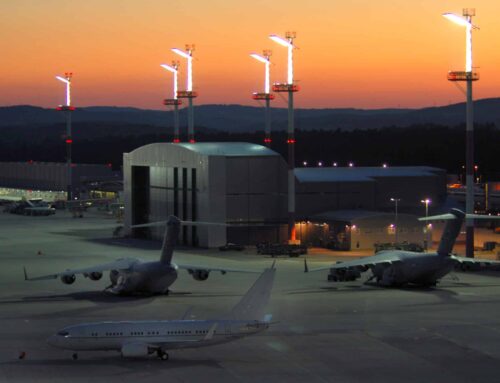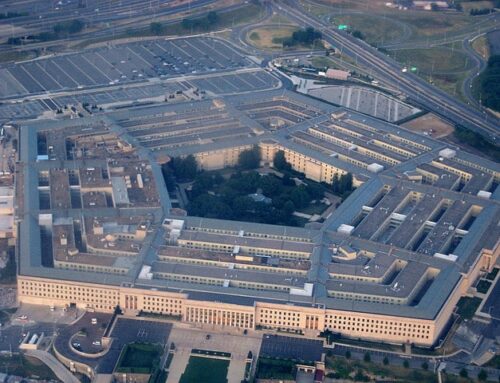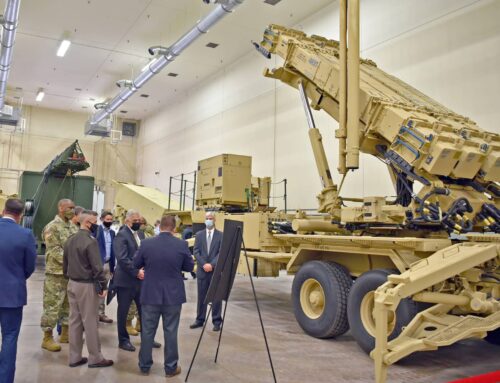Last week, the House Appropriations Committee approved the fiscal year 2015 spending bill for the Department of Homeland Security. Overall, the bill recommends spending $39.2 billion on DHS next year. In the words of the committee press release the bill would, “help strengthen America’s homeland security efforts, including securing our borders, enforcing our laws, protecting against cyber threats, bolstering counternarcotic efforts, responding to natural disasters, and fighting terrorism.” It is important to note the first item on this list is “securing the borders.”
When policymakers talk about “securing our borders,” what they are really talking about is making the Southern border more impervious to illegal crossings, which is a fine goal. Better these efforts show up in a Homeland Security appropriations bill than taking the guise of “immigration reform.” Remember last summer, when S.744, a Senate bill to reform the immigration process, was successfully hijacked by efforts to “secure” the southern border? A whopping great amendment to add $12 billion in fencing, surveillance and other types of hardware on the border was accepted by the Senate.
The problem with that amendment was that it was really just an outdated Customs and Border Patrol wish list of hardware to enhance surveillance capabilities. Of the $12 billion, $7.5 billion was slated to build 350 more miles of fencing and $4.5 billion was to carry out the so-called “Comprehensive Southern Border Security Strategy,” which is reflected in the hardware requested. Another notable fact about that wish list is that it was the first time we had seen requests for specific types of hardware in bill language.
But that Senate bill is last year’s news and unlikely to go anywhere in the House of Representatives this year. And besides that, even if it became law in its current form, it wouldn’t result in a check being cut for each item from the U.S. Treasury. But the DHS appropriations bill can do just that because appropriations bills fund the actions of our federal government each year.
And now, for the first time, we are seeing appropriations requests for these specific types of hardware in the Homeland Security appropriations bill. Within the voluminous committee report accompanying the DHS funding bill, in the detailed information under “Border Security Fencing, Infrastructure, and Technology,” there is an increase of roughly $51 million in spending: $28 million to development and deployment, and $23 million to operations and maintenance. And those increases reveal the leading edge of appropriations to fund that old wish list. The committee report includes $7.5 million for 22 mobile video surveillance systems, $10 million to make infrastructure improvements for upgraded remote video surveillance systems and $10 million for unattended ground sensors and imaging sensors, a cross border tunnel threat analysis of alternatives and a communications study.
The majority of the specific technologies called out in this language correspond to technologies on the old wish list and, most importantly, are not in the administration’s budget request. Each of these technologies has one or more government contractors just itching to get a contract for some of this work. After all, federal spending on high-tech gadgetry is slowly drifting downward as the U.S. ends its involvement in two wars. And just to make sure DHS is paying attention to what the House appropriators want, we note that the last sentence in the paragraph quoted above is: “[Customs and Border Patrol] is directed to continue providing weekly notifications on procurement actions related to technology investments until all initial contract awards have been made.” Being required to do weekly briefings on the status of the contracts is sure to get the attention of everyone at DHS.
So what if DHS didn’t request funding for these programs? Contractors are hungry for work, and they and Congress, will point to any authority, no matter how obsolete, in order to keep the dollars flowing. Take, for example, the 2011 “Report of the Assessment of the Secure Border Initiative-Network (SBInet) Program,” which argues for some of these technologies. They’ll ignore the fact that SBInet was cancelled in January 2011.
While an additional $51 million in such a big bill may not seem like much, in these fiscally austere times is it smart to start taking us down a path of a program currently estimated to cost $4.5 billion? Taxpayers will be footing that bill, which will certainly line the pockets of government contractors, but it still won’t make the border impervious to illegal activity.











Get Social